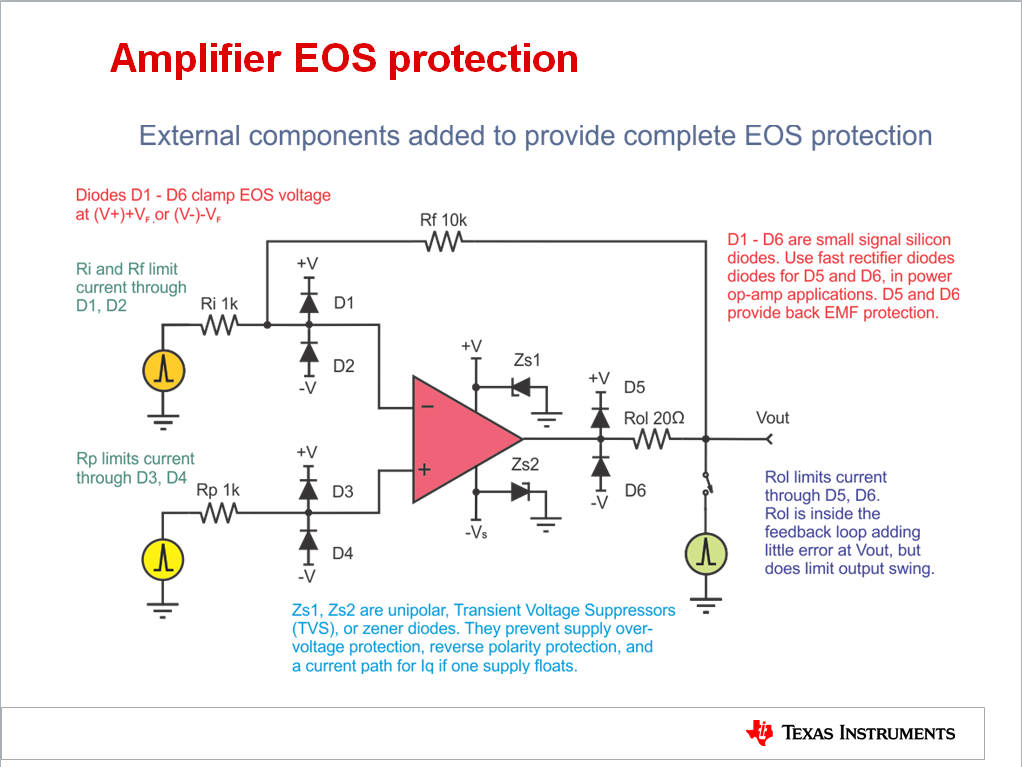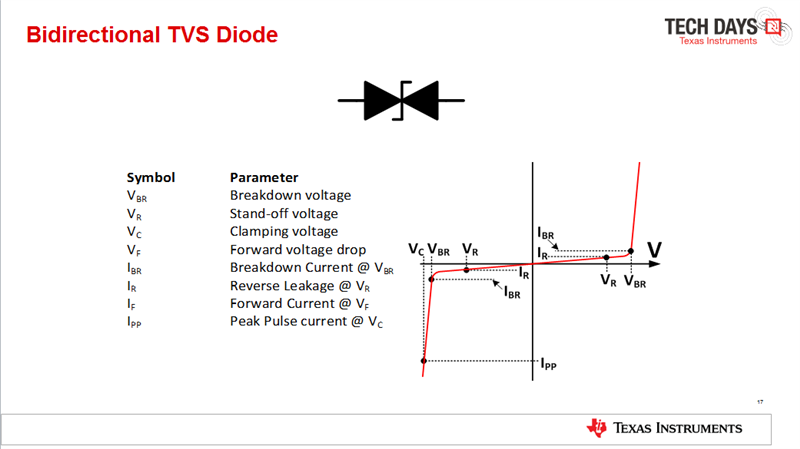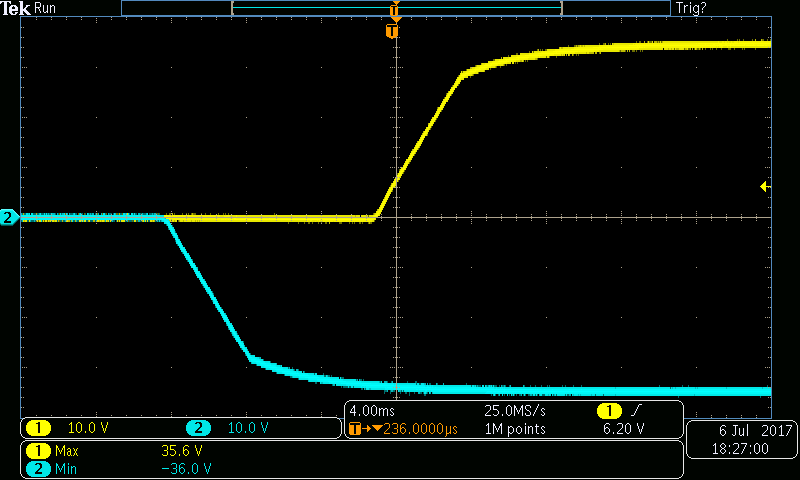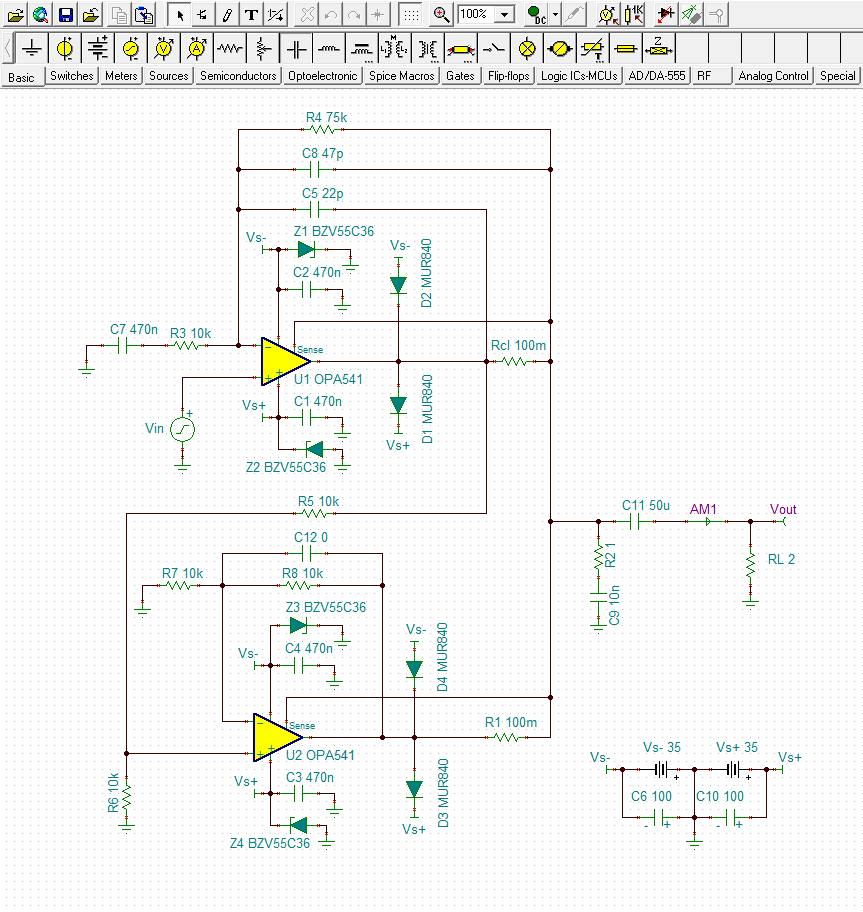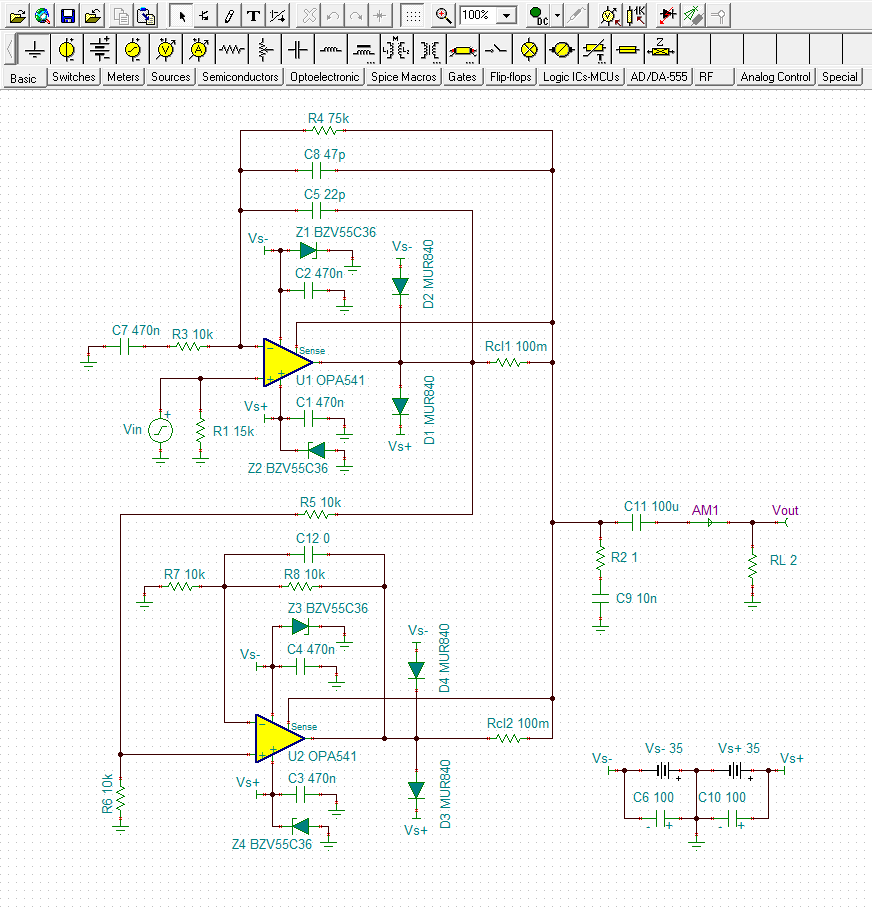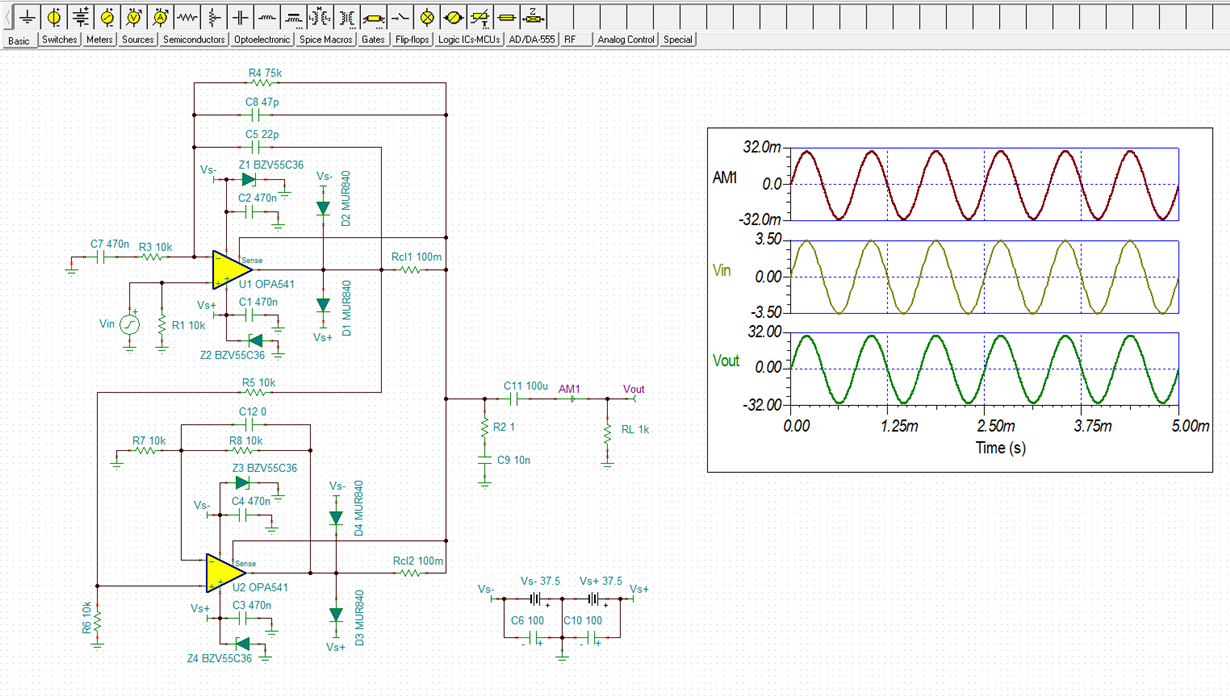Other Parts Discussed in Thread: OPA549, TINA-TI
Hello,
I have a small question about the use of the OPA541 in "Paralleled Operation" mode.
In the datasheet, it's specified that this assembly works as an inverter, but does it works in non-inverter mode?
When I did the test, my power supply is short-circuited and the second OPA541 (slave) heats up enormously and very quickly.
On the other hand, when I test with a single OPA541 (the master), it seems to work.
I could send you the design if you wish.
Thank you in advance.
Florian


